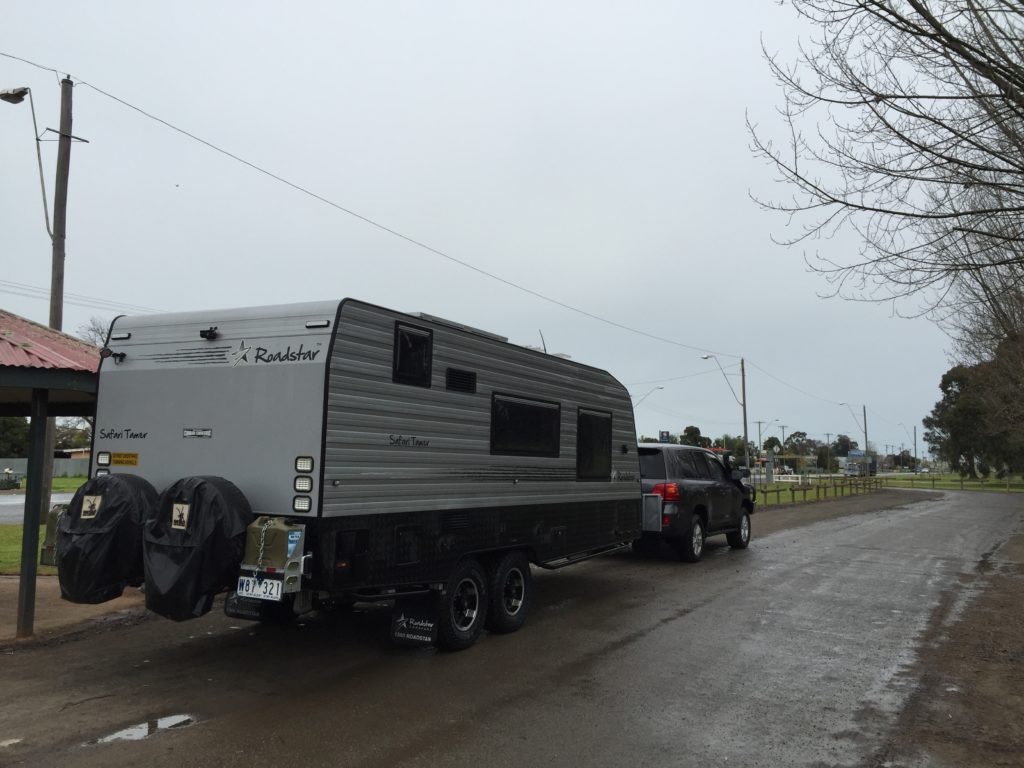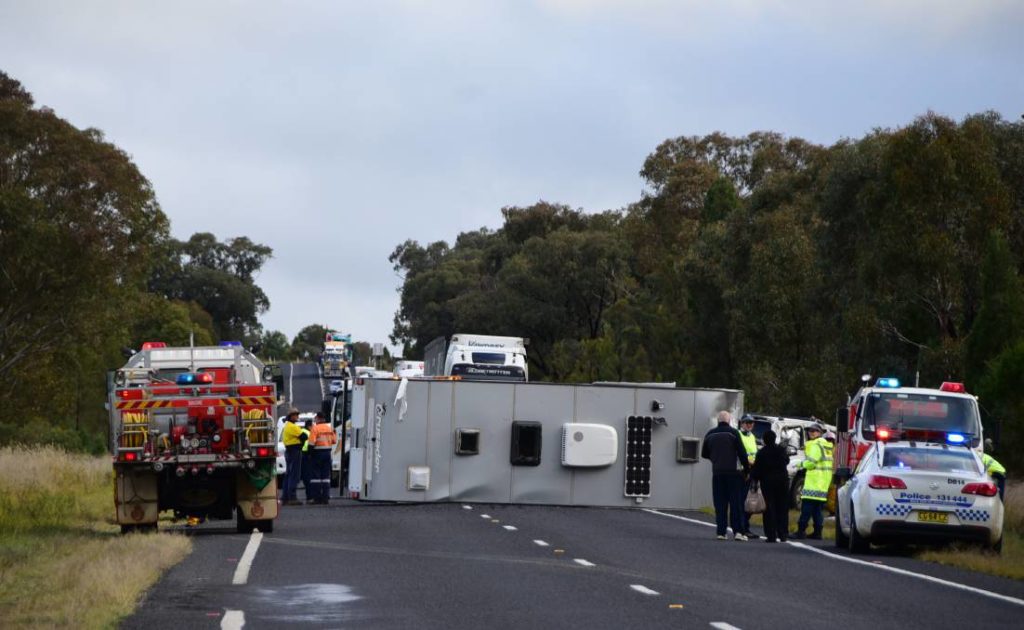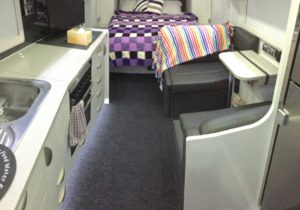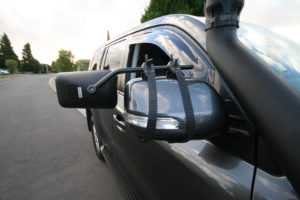Lately it seems every week there is a new dash-cam video of a caravan coming to grief on the road, usually as a result of an uncontrollable sway or fish-tail incident. These videos get plastered all over social media and they attract hundreds of comments usually questioning the skill of the driver involved or the recklessness of their actions. Some question the load distribution of the rig and whether or not the towing vehicle was up to the task. Personally I do not like these sort of posts mainly because they comments they attract are often misinformed and opinionated and come from people who have absolutely no knowledge of the facts leading up to the incident. For me it’s very easy to be an armchair expert with little regard to the effect those comments may have on the actual individuals involved.
It gets worse. A well-known current affairs program notorious for their lack of journalistic excellence, jumped onto the same bandwagon when the latest footage emerged on the net. Their comments and those of their experts we’re one thing, but the comments posted on their facebook page really only served to cast caravanners in a bad light. Nothing in the report really offered any guidance for others who might find themselves in a similar situation. It also featured footage from the UK and the US while stating that 'we see this on our roads all the time'. One clip they showed was of a car and caravan skidding into the path of an oncoming truck. I know for a fact the incident in that instance did not result from any driver error but was due to the presence of oil on the road. Never let the facts get in the way of a good story.

The truth is, there is a variety of opinions about what a driver of a car and trailer should do in the instance the trailer gets the sways. The natural reaction of the driver, especially if they are inexperienced, would be to hit the brakes. That, in my opinion, would be the worst thing to do. Many guides state that you should try to accelerate out of the sway. This, again, is not always possible and I doubt it would work anyway.
Years ago, before I had any real idea about towing and weights and such stuff, I was towing a small box trailer carrying about 12 railway sleepers with a Diahatsu Feroza. Now before you all jump on me for my obvious stupidity, I was less than half my current age at the time and really didn't know any better.
In any case, the inevitable happened and, while driving up the busy Hume Hwy, as I approached 70kph, almost without any warning the trailer started to sway quite violently. Fortunately I had some knowledge of 4wding at the time and one thing that gets drilled into you is not to panic when the proverbial hits the fan and DON'T slam on the brakes. Instead, I slowly released my foot from the accelerator and steadily slowed down, keeping the steering wheel straight, until the swaying stopped. As quickly as the sway had started, slowing down had an immediate opposite effect and brought the rig back under control.
Fortunately I have never been in a similar situation since then, however, I am absolutely convinced that my actions that day saved my life and that of my passenger, not to mention other motorists around me.
I don't believe trying to accelerate out of the sway would have worked for 2 reasons.
- I couldn't even if I wanted to, the poor Feroza was struggling with the load as it was.
- Even if I could, that would only introduce additional 'energy' into an already out of control situation and possibly would have made things worse.
Hitting the brakes would only have served to raise the speed difference between the car and the trailer leading to a worsening of the sway as the trailer tried to overtake the car.
Slowing down gradually by just releasing the accelerator enabled the energy already in the system to dissipate equally from both the car and trailer, taking energy away from the sway and returning the rig to a state of control. If I had trailer brakes operated remotely from the car, activating them would have had the same result, a controlled slowing down and dissipation of the energy in the sway.
So my suggestion is to avoid the situation happening in the first place. This is done by following some simple suggestions:
- Ensure both your car and trailer are roadworthy and any servicing is up to date.
- Ensure the load is correctly distribution across the whole rig.
- Ensure your tire pressures across the rig are set according to the manufacturers’ instructions
- Ensure your trailer connections are working especially any electronic braking system
- Fit a weight distribution hitch. This will ensure that control of the rig is on the front wheels of the tow vehicle, enhancing stability.
- Get your rig weighed to ensure you haven’t exceeded any limits on the tow vehicle or the trailer
- Take your rig for a test drive somewhere away from heavy traffic and gradually work up to normal cruising speeds.
You can consider fitting a sway control device such as friction arms or trailer mounted electronic stability control but keep in mind these can induce a false sense of security. You don’t want to be relying on these features. Setting up the rig correctly in the first place is far more important.
Passing large trucks can expose your rig to some pretty strong forces such as the wind turbulence coming from the front of the truck and down along both sides. This turbulence or pressure wave can have a detrimental effect on your rig’s stability as you pass through it. If you have to overtake a truck, give yourself plenty of room to manoeuvre and don’t cut back in front of the truck until you are well past it. Give the truckie plenty of warning by contacting him/her on UHF Ch.40.

I would also recommend you don’t exceed 100kph especially when towing a trailer in excess of 2500kgs or if the trailer is at the limits of your tow vehicle’s capabilities.
If you do experience trailer sway:
- Remain calm. Do not panic.
- Don’t touch the tow vehicles brakes and don’t try to control the sway by steering input.
- Keep the steering wheel pointed straight ahead as much as possible.
- Gradually release the accelerator and reduce speed until the swaying stops.
- If the trailer is fitted with electronic brakes, activate them manually using the override feature.
- Once the vehicle has regained stability, slow right down and pull off the road at the first safe opportunity.
- Check over the rig for anything that may have contributed to the situation. Tire pressures, load balance, etc.
Something else to keep in mind is that some caravans require a load such as water in their tanks to be completely stable. It can be a sign of poor caravan design but many vans are like this. If you have any doubts, fill the front most water tank and retest your rig to see if the stability has improved. Check with the manufacturer if you have any doubts.
Safe travels






Hi. Just wondering what your Roadstar weighed on the weigh bridge when empty, not the stamped compliance plate weight.
Hi Steven
Thanks for your question. To be perfectly honest we haven’t had a chance to weight it seperately as yet. I suspect if it is over the compliance plate weight, it wont be by much. Our tare is 2,890KG. That was a little heavier than we had hoped for but given we added a grey water tank, extra solar panel, an inverter and a gas heater, it seems pretty right to me. Roadstar also increased our ATM to the maximum 3,500kg. We’ve learn’t to pack pretty light these days so I’m not expecting any surprises when we do get around to weight the van ourselves. I’ve recently become aware that the weighbridge at Broadford (Victoria) is available any time so I’m going to take it there to check the weights, Irrespective, if we were to fill all three water tanks and all 4 jerry cans, a total of 365kg, we may have to lighten our load even more…! We’re also planning to replace the AGM batteries with Lithium before we head off on our big trip. Looking at what’s available on the market, we should be able to remove at least 30kg if not more.
Safe Travels
Marty.